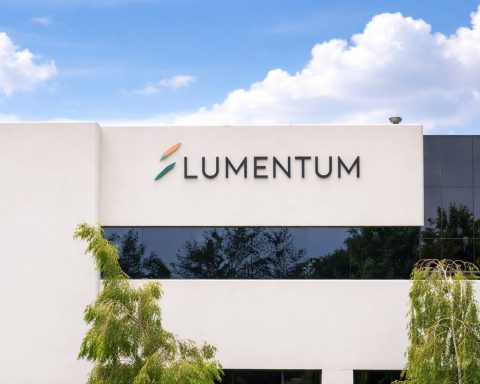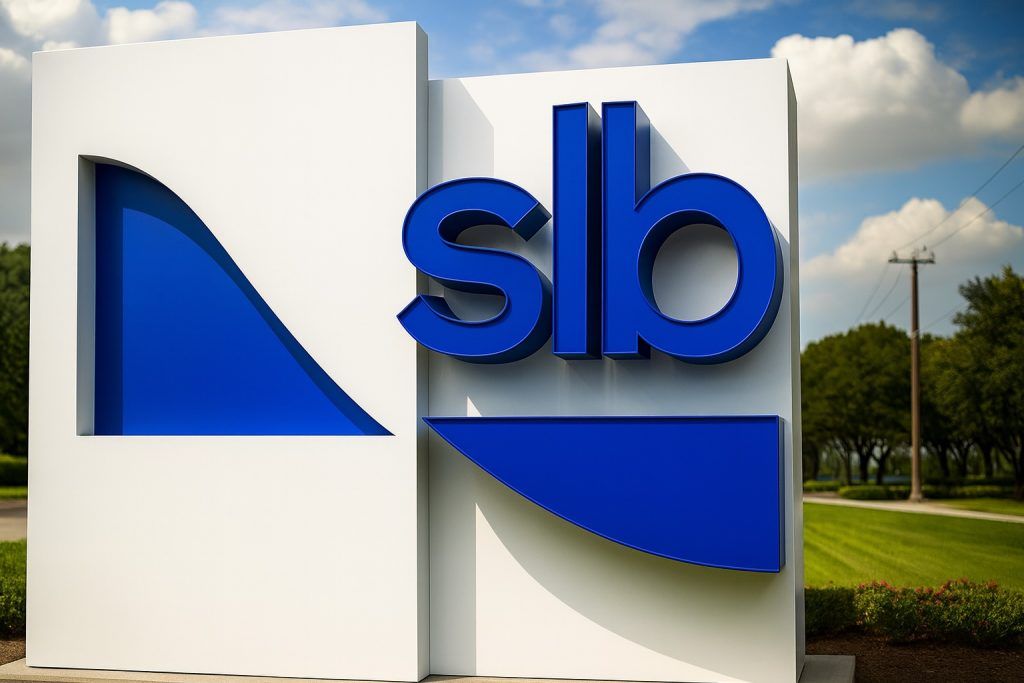- Shares Rebound After Earnings: Fifth Third Bancorp’s stock (NASDAQ: FITB) traded around the low-$40s on Oct. 17, 2025, up about 2–3% after a strong Q3 earnings report [1]. This comes a day after regional bank stocks plunged on credit fears, with FITB falling ~4% on Oct. 16 [2]. Year-to-date, Fifth Third shares were down roughly 4.5% as of Thursday’s close [3].
- Q3 Profit Surges, Beats Estimates: Third-quarter profit jumped 14% year-on-year to $608 million (EPS $0.91), topping analyst expectations of ~$0.86 [4]. Robust fee income (+10% YoY) drove the beat, with wealth management fees up 11% and mortgage banking fees up 16% [5]. The bank did take a one-time $178 million charge tied to a bankrupt auto lender (Tricolor), but still posted higher earnings than a year ago [6].
- Interest Income Climbs as Costs Ease: Net interest income rose ~7% to $1.53 billion in Q3, aided by lower deposit costs and repricing of fixed-rate loans [7]. A recent Fed interest rate cut in September – the first of the year – has started to lower funding costs and spur loan demand, boosting banks’ margins [8]. Fifth Third and peers also reported lower credit-loss provisions than analysts expected, easing worries about asset quality [9].
- $10.9B Mega-Merger: Earlier this month, Fifth Third announced a $10.9 billion all-stock deal to acquire Comerica Inc., a blockbuster merger that will create the nation’s 9th-largest bank with roughly $288 billion in assets [10]. Comerica shareholders get 1.8663 Fifth Third shares per share (about $82.88 value, a ~20% premium) under the deal [11]. The acquisition, expected to close by Q1 2026 pending approvals, expands Fifth Third’s footprint into fast-growing markets like Texas and the Sun Belt [12].
- Analysts Mostly Bullish – Buy, Sell or Hold?: Wall Street is broadly positive on FITB. The stock carries a “Moderate Buy” consensus rating with ~22 analysts covering [13]. Numerous banks have raised price targets post-merger, averaging around $50–$52 (roughly 15–20% above current levels). This week, Stephens upgraded Fifth Third to Overweight with a $52 target [14], and Morgan Stanley set one of the highest targets at $57 [15]. While a few remain cautious, most experts see Fifth Third as a Buy at current levels, citing its earnings resilience and growth prospects.
Fifth Third Stock Rallies After Turbulent Week
Fifth Third Bank logo is seen in this illustration taken April 23, 2024 (REUTERS/Dado Ruvic).
Fifth Third’s stock is bouncing back to end a volatile week. By midday Friday (Oct. 17), FITB shares were trading around $41–$42, up roughly 2–3% after the bank’s strong earnings report beat expectations [16]. The mini-rally follows a sharp selloff in regional bank stocks just one day earlier: on Thursday, Fifth Third fell about 4% as part of a broader rout fueled by credit worries [17]. News of surprise loan losses at two peer banks – Zions and Western Alliance – had spooked investors, dragging the KBW regional banking index down over 6% in its worst drop since April [18] [19].
Despite those jitters, Fifth Third’s solid earnings helped restore confidence. The stock’s Friday rebound still leaves it modestly lower for the week, but it has recouped some lost ground. Year-to-date, FITB is down ~4–5% (excluding dividends) [20], underperforming the S&P 500, as regional lenders have faced a tougher climate in 2025. However, analysts note that Fifth Third’s latest results and upcoming merger could mark a turning point. “Investors had a ‘sell first, ask questions later’ reaction to the credit scare, but strong earnings from Fifth Third and others are easing those fears today,” said one market strategist. Indeed, the SPDR Regional Banking ETF swung from a 6% plunge Thursday to a 1% gain in Friday’s pre-market after Fifth Third, Truist, and Regions Financial all impressed with their reports [21].
Q3 Earnings Beat Expectations – Fees and Loans Up
Fifth Third handily beat Wall Street estimates in the third quarter of 2025, showcasing steady growth despite industry headwinds. The Cincinnati-based bank posted net income of $608 million for Q3, up from $532 million a year earlier [22]. That equates to $0.91 per share, topping the consensus forecast of around $0.86 [23]. “Fifth Third Bancorp’s capital markets fees jumped 16%… while its wealth and asset management revenue rose 11%,” Reuters noted, highlighting broad strength in fee-based businesses [24]. In total, non-interest income climbed about 10% year-over-year to $781 million [25], thanks to robust results in wealth management, mortgage banking, and card fees.
Net interest income (the core revenue from lending minus deposit costs) also ticked higher, rising roughly 7% to $1.53 billion [26]. This growth came even as industry-wide loan growth has been modest. Fifth Third benefited from lower funding costs – in part because the Federal Reserve cut interest rates in September, easing pressure to pay up for deposits [27]. Loan demand also held up well, helping offset margin compression. “Expectations of further rate cuts later this year are fueling optimism for improved margins,” Reuters reported, as cheaper borrowing costs could stimulate lending [28].
It wasn’t all perfect: Fifth Third recorded a notable one-time charge related to a troubled borrower. The bank took a $178 million loss on a loan to Tricolor Auto, a subprime car lender that filed for bankruptcy last month [29] [30]. This drove Fifth Third’s quarterly credit charge-offs up to $339 million [31]. However, investors had been bracing for this hit ever since the loan loss was disclosed in September, and the bank’s underlying performance overshadowed the issue. Loan loss provisions (money set aside for potential bad loans) actually came in lower than analysts feared across many regional banks, including Fifth Third [32]. That positive surprise on credit quality “helped buoy sentiment after a sharp selloff” in the group [33].
Management struck an upbeat tone on the earnings call, emphasizing stable asset quality and a healthy pipeline. They noted that demand deposits grew ~3% year-on-year, a sign of customer confidence [34]. Expense control was another bright spot – while costs increased due to inflation and tech investments, Fifth Third still expects to hold Q4 net interest income roughly flat to slightly up from Q3 [35], indicating margin stability into year-end. All told, the Q3 results portray a bank managing to grow both fees and interest income, even as it absorbs some credit knocks.
$10.9 Billion Comerica Takeover Reshapes the Bank
The quarter’s biggest headline came before earnings: On October 6, Fifth Third unveiled a blockbuster deal to acquire Comerica Incorporated. The all-stock merger, valued at $10.9 billion, will dramatically expand Fifth Third’s reach and scale. Once completed, the combined company will boast about $288 billion in assets, vaulting it into the top-ten U.S. banks by size [36]. “This is officially the biggest thing we’ve ever done as a company, by any measure,” Fifth Third CEO Tim Spence said of the transaction [37].
Under the agreed terms, Dallas-based Comerica’s shareholders will receive 1.8663 shares of Fifth Third for each Comerica share, implying a value of roughly $82.88 per share for Comerica – about a 20% premium to its prior trading average [38]. Fifth Third’s investors will end up owning ~73% of the combined bank and Comerica’s about 27% [39]. The deal is expected to close by March 2026, pending regulatory and shareholder approvals [40]. Executives from both banks expressed confidence that regulators will bless the union, especially given a generally friendlier climate for bank M&A in Washington lately [41] [42]. Comerica’s CEO Curtis Farmer cited a “shifting regulatory environment… more conducive to M&A” as a catalyst for the tie-up [43]. Notably, this is the largest U.S. bank deal of 2025 so far [44], capping off a year that saw a wave of regional bank combinations.
Strategically, the merger is aimed at creating a stronger, more geographically balanced regional lender. Fifth Third, based in Cincinnati, gains a robust foothold in Texas and the fast-growing Sun Belt via Comerica’s presence [45]. The combined bank will operate in 17 of the 20 fastest-growing U.S. markets, management noted [46]. Fifth Third has already announced plans to aggressively expand in Comerica’s territories – for example, opening 150 new branches in Texas by 2029 to capitalize on booming population and business growth there [47]. Spence said the deal “accelerates [Fifth Third’s] strategy to build density in high-growth markets” while complementing Comerica’s strengths in commercial banking with Fifth Third’s consumer and digital banking expertise [48]. In other words, the two regionals see themselves as a natural fit.
Market reaction to the October 6 announcement was telling: Comerica’s stock (CMA) surged about 15% toward the ~$80 level on the news, reflecting the generous takeover premium [49]. Fifth Third’s stock initially dipped slightly on dilution concerns [50], but largely held its ground – investors appeared to welcome the strategic rationale. “Analysts at Piper Sandler called the tie-up ‘basically, a game-changer’ for the regional banking landscape” [51], given the deal’s scale and potential to spark further consolidation. Fifth Third will instantly leapfrog many peers in size, becoming a powerhouse in the Midwest and Southwest. “Today’s announcement will likely encourage more boardroom discussions about possible tie-ups,” observed Argus Research analyst Stephen Biggar, noting that many mid-sized banks are under pressure to find partners [52]. Indeed, 2025 has seen several big bank mergers (e.g. Capital One’s $35B deal for Discover, PNC’s $4.1B purchase of FirstBank) amid a post-2023 wave of consolidation [53]. Fifth Third’s bold Comerica move could inspire “more combinations amongst regional banks because we are in an environment where bank M&A…makes a lot of sense,” said Michael Ashley Schulman of Running Point Capital [54].
Of course, the merger still has to be executed. Shareholders and regulators will scrutinize the plan in coming months. If approved, Fifth Third will have to integrate Comerica’s operations and customer base – always a complex task. The bank has set aside a hefty $500 million termination fee in case either party walks away [55], underscoring the commitment to get the deal done. For now, though, both management and industry observers are upbeat. The merger promises to give Fifth Third significantly more scale, a diversified geographic footprint, and cost synergies (not yet quantified) that could bolster earnings over time. It also raises questions about culture and branding – for instance, Detroit’s famed Comerica Park (named for Comerica since 2000) will keep its name at least through 2034 under the existing sponsorship, despite the bank changing hands [56]. Overall, the acquisition marks a daring bet by Fifth Third to join the top tier of U.S. regional banks.
Regional Banking Sector Trends: Credit Fears vs. Resilience
Fifth Third’s recent fortunes can’t be separated from the broader currents affecting U.S. regional banks. On one hand, high interest rates through early 2025 squeezed many banks’ net interest margins and contributed to some high-profile bank failures in 2023. On the other hand, the Fed’s pivot to rate cuts this fall has started to relieve pressure, and economic growth has proven resilient [57] – factors now working in banks’ favor. Fifth Third’s Q3 results mirror those of peers like Truist and Huntington Bancshares, which also reported improved profits this week. Truist saw a similar ~2% stock jump after posting higher wealth management income and interest income [58]. Huntington’s net interest income leapt 11% thanks to lower deposit costs [59], and it noted that its results “mirror those of peers Citizens and PNC” who likewise enjoyed a boost from rising interest revenue [60]. Many regional banks are finally seeing relief on funding costs – an outcome of both rate cuts and aggressive deposit repricing earlier this year. This tailwind is helping to stabilize margins after a period of compression.
Credit quality remains a focal point for investors. The past week demonstrated how sensitive bank stocks are to any hint of credit trouble. The triggers for Thursday’s selloff were fairly specific: Zions Bancorp revealed an unexpected $50 million loan charge-off after uncovering borrower fraud, and Western Alliance disclosed it had sued a borrower over a ~$100 million loan fraud case [61]. These idiosyncratic issues sparked broader “cockroach theory” fears – the worry that if one bank has a bad loan surprise, others might too. “When you see one cockroach, there are probably more,” JPMorgan’s CEO Jamie Dimon warned this week in reference to recent fraud-related losses across the industry [62]. Bank stocks tumbled as investors rushed first to sell and ask questions later [63]. Fifth Third wasn’t spared, despite no direct involvement in those incidents. Notably, Fifth Third had disclosed last month that it might incur up to $200 million in losses on two suspect loans (likely referencing the Tricolor auto loan) [64] – so Thursday’s news may have compounded existing anxieties.
However, banking experts point out that these credit problems, while concerning, appear isolated rather than systemic. “Pockets of the U.S. banking sector including regional banks have given the market cause for concern,” said Russ Mould of AJ Bell, “This includes Zions flagging an unexpected loss on two loans and Western Alliance alleging a borrower had committed fraud.” [65] But aside from those headlines, most regionals reported stable or improving credit metrics in Q3. Fifth Third’s overall non-performing asset ratio and delinquency trends were largely unchanged, according to its filings (no major deterioration was noted). The bank’s loan loss reserves remain healthy, and management indicated they feel adequately reserved for current known issues. In Q3, Fifth Third’s provision for credit losses was $190 million (excluding the one-time charge), up from $106 million a year prior, reflecting a cautious stance but not an alarming spike [66] [67]. Crucially, consumer credit – e.g. credit card and mortgage delinquencies – have not shown dramatic stress so far, thanks to low unemployment and still-solid consumer balance sheets.
Another trend benefiting Fifth Third and peers is a resurgence in capital markets activity. With the stock market hitting record highs in late summer and dealmaking rebounding, banks saw capital markets and advisory fees jump in Q3. Huntington, for instance, reported a 21% surge in investment banking fees amid “a triumphant comeback” in M&A deals [68]. Fifth Third similarly enjoyed a lift in fee income from debt underwriting and advisory work, according to executives. If economic conditions remain favorable, these fee businesses could provide an extra earnings kicker going forward.
In sum, the regional banking sector is navigating a complex environment: easing interest-rate pressures and economic growth are tailwinds, while select credit flare-ups and competition for deposits pose challenges. Fifth Third’s latest moves – strengthening its franchise via the Comerica merger and demonstrating solid core performance – suggest it is positioning to thrive as the landscape shifts. The stock’s relative underperformance this year (lagging the broader market) may reflect those earlier challenges, but the question for investors is whether 2025’s headwinds are giving way to a more positive 2026 outlook.
Analyst and Expert Outlook: Will FITB Stock Keep Climbing?
With fresh earnings in hand and a transformational acquisition on deck, many analysts see Fifth Third as well-positioned – and Wall Street’s sentiment has turned largely bullish. According to MarketBeat data, 22 analysts currently cover FITB and the consensus rating is “Moderate Buy,” with 17 calling it a Buy or Strong Buy and only 4 recommending Hold [69]. The average 12-month price target is approximately $50–$51 per share, implying about 20% upside from the stock’s mid-$40s levels [70]. Some experts have even higher conviction: Stephens Inc. upgraded Fifth Third to Overweight (from Equal-Weight) on October 14, citing the benefits of the Comerica deal, and raised its price target to $52 [71]. Similarly, DA Davidson and Autonomous Research bumped their targets into the low $50s while reiterating bullish ratings [72]. “Basically, the market’s view is that Fifth Third’s merger is a game-changer that gives it superior growth potential,” noted a Piper Sandler analyst, echoing the firm’s characterization of the deal as “a game-changer” for the bank [73].
Even some historically conservative analysts have grown more optimistic. For example, Morgan Stanley’s bank analyst team recently reaffirmed an “Overweight” stance and lifted their price target to $57, one of the highest on the Street [74]. That target suggests Morgan Stanley believes Fifth Third’s shares could appreciate roughly 30% in the coming year. In a note, they pointed to Fifth Third’s enhanced scale post-merger and its above-peer fee income growth as key drivers. Goldman Sachs, Evercore ISI, and Barclays are among other firms that have nudged up targets into the high-$40s or beyond in the wake of the deal [75] [76].
Of course, not everyone is pounding the table to buy immediately. A few analysts prefer to wait and see how the Comerica integration unfolds and how credit trends evolve. UBS analysts, for instance, maintained a Neutral rating (they modestly raised their target from $43 to $45) ahead of earnings [77], citing concerns about higher operating costs and integration risk. They noted that Fifth Third’s expense base could rise with the merger and that cost synergies won’t be realized until 2026+. Additionally, any stumble in merging two large organizations or unexpected credit losses could weigh on the stock. These more cautious voices advise a “wait-and-see” hold stance, at least until the merger clears regulatory hurdles.
That said, the balance of opinion leans positive. Fifth Third’s management has a track record of delivering on targets (the bank has met or beaten earnings expectations in multiple recent quarters). The successful execution of past acquisitions – like MB Financial in 2019 – gives some analysts confidence that the Comerica deal will create value. Moreover, the bank’s current dividend yield near 4% provides some downside cushion for investors getting in now. Valuation is another supportive factor: FITB trades around 8-9 times forward earnings, below the sector average, which “may present a buying opportunity for investors looking for value in the financial sector,” as noted by MarketBeat analysts [78]. In other words, the stock is reasonably cheap if one believes Fifth Third’s earnings will continue to grow in 2026 and beyond.
Bottom line: Fifth Third Bancorp has emerged from a tumultuous week with positive momentum. A strong quarterly report and a bold merger announcement have put the bank in the spotlight. Most financial pundits and analysts currently favor FITB as a “Buy” or at least a “Hold,” expecting further upside if the Comerica integration goes smoothly and economic conditions remain benign. To be sure, investors should keep an eye on credit quality trends and merger progress in coming months. But with a transformative acquisition on the horizon, improving margins, and analysts seeing the stock as undervalued, Fifth Third’s outlook appears brighter than it has been for some time. As one banking industry expert summed up: “Fifth Third is making all the right moves – now it’s about execution. If they deliver, there’s no reason this regional can’t outperform in the year ahead.”
Sources: Financial news and data from TechStock² (TS2) [79] [80] [81], Reuters [82] [83] [84], Bloomberg [85], MarketBeat/MarketScreener [86] [87], Yahoo Finance/Zacks, and company filings.
References
1. www.reuters.com, 2. ts2.tech, 3. www.reuters.com, 4. www.nasdaq.com, 5. www.reuters.com, 6. www.reuters.com, 7. www.reuters.com, 8. www.reuters.com, 9. news.bloombergtax.com, 10. ts2.tech, 11. ts2.tech, 12. ts2.tech, 13. www.marketbeat.com, 14. www.marketscreener.com, 15. www.marketbeat.com, 16. www.reuters.com, 17. ts2.tech, 18. ts2.tech, 19. ts2.tech, 20. www.reuters.com, 21. www.reuters.com, 22. www.reuters.com, 23. www.nasdaq.com, 24. www.reuters.com, 25. www.reuters.com, 26. www.reuters.com, 27. www.reuters.com, 28. www.reuters.com, 29. www.reuters.com, 30. www.reuters.com, 31. www.reuters.com, 32. news.bloombergtax.com, 33. news.bloombergtax.com, 34. www.rttnews.com, 35. www.marketscreener.com, 36. ts2.tech, 37. ts2.tech, 38. ts2.tech, 39. ts2.tech, 40. ts2.tech, 41. www.reuters.com, 42. www.reuters.com, 43. www.reuters.com, 44. www.reuters.com, 45. ts2.tech, 46. ts2.tech, 47. ts2.tech, 48. ts2.tech, 49. ts2.tech, 50. ts2.tech, 51. ts2.tech, 52. ts2.tech, 53. ts2.tech, 54. www.reuters.com, 55. www.marketscreener.com, 56. ts2.tech, 57. www.reuters.com, 58. www.reuters.com, 59. www.reuters.com, 60. www.reuters.com, 61. ts2.tech, 62. ts2.tech, 63. ts2.tech, 64. ts2.tech, 65. www.reuters.com, 66. www.reuters.com, 67. www.reuters.com, 68. www.reuters.com, 69. www.marketbeat.com, 70. www.marketbeat.com, 71. www.marketscreener.com, 72. www.marketscreener.com, 73. ts2.tech, 74. www.marketbeat.com, 75. www.marketbeat.com, 76. www.marketbeat.com, 77. www.benzinga.com, 78. www.marketbeat.com, 79. ts2.tech, 80. ts2.tech, 81. ts2.tech, 82. www.reuters.com, 83. www.reuters.com, 84. www.reuters.com, 85. news.bloombergtax.com, 86. www.marketscreener.com, 87. www.marketbeat.com









